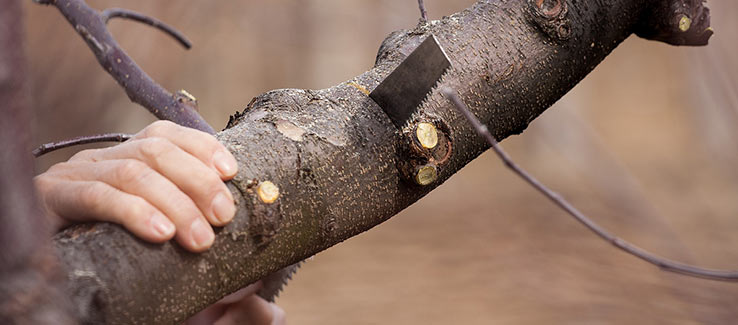How to Prune Tree Branches
Prevent dying, infested, and diseased branches from killing your trees. Knowing the basics of pruning branches will help you preserve the health and structure of your trees.
fasttreeremovalatlanta.com gathered the following information about pruning tree branches, including how, why, and when to prune.
Pruning Tree Branches
Correctly pruning branches allows a tree to compartmentalize (seal and isolate) the wound, reducing the risk of rot, disease, or infestation. The following steps will help you properly prune branches from your tree:
Tree Pruning Step 1
Identify the branches you intend to prune. If you are pruning several branches from a tree or multiple branches from several trees, mark them with a ribbon or fluorescent spray paint before you start.
This is also the time to evaluate the safety of your pruning activities. If a branch is out of your reach, growing over your home, or too large (over six inches in diameter), consider hiring a professional tree service to avoid catastrophic or life-threatening accidents.
Note: When cut, larger branches can fall with thousands of pounds of crushing force. Carefully assess the safety of cutting such branches before pruning them.
Tree Pruning Step 2
Prepare a one-gallon solution of 70% water and 30% isopropyl alcohol or bleach. Use this solution to sanitize all of the equipment, tools, and protective gear you intend to use when pruning your trees.
Sanitize your equipment, tools, and gear before starting work on your first tree. Then, sanitize them again before moving on to the next tree.
Note: If you suspect that one of your trees is diseased, save it for last, and carefully destroy all material removed from it. Do not add any diseased material to a compost or mulch pile.
Tip: Pour your sanitizing solution into a spray bottle and spray your equipment for a more efficient application.
Tree Pruning Step 3
Following the 3-cut method will help you avoid bark damage (bark stripping) when pruning medium and large-sized branches. Here’s how to do it:
Cut #1 – This cut is known as a relief cut or undercut and should be approximately 6 inches away from the trunk on the branch’s underside. This cut should be through 1/4 of the branch and serves as a stopping point if the bark tears or strips as the branch falls.
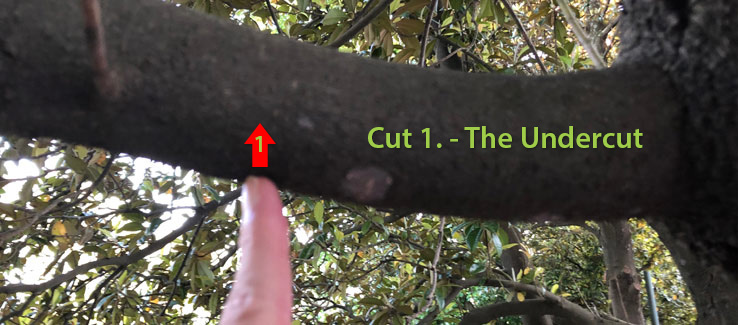
Cut #2 – This cut should be 6 inches further out from cut #1. This is a top-down cut and severs the branch’s bulk from the tree.
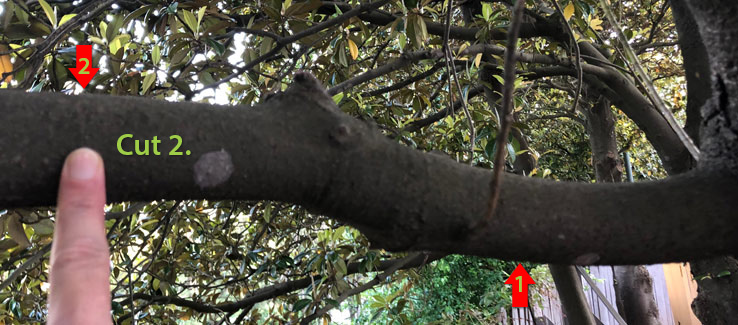
Cut #3 – This final cut occurs flush with the branch collar, removing the branch’s remaining portion. For proper compartmentalization (healing), avoid damaging the root collar.
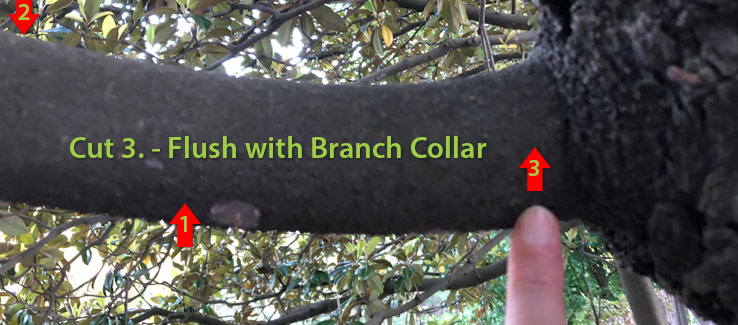
Tip: After you have pruned a branch, remove or dispose of it before moving on. Leaving such debris on the ground may interfere with your ability to correctly prune the next branch or flee in the event of a branch unexpectedly falling toward you.
Read more about how trees recover from pruning activities at fasttreeremovalatlanta.com/how-trees-recover-wounds-pruning
Why Prune Trees
Pruning activities should be done with purpose. If you are pruning just to prune, you may cause more damage to your trees than solutions. The following are several of the reasons that justify pruning your trees:
Shaping – If performed early on in the life of a tree, less pruning will be necessary as the tree matures to keep its shape.
Crown Thinning – This type of pruning removes limbs and foliage from within the crown, permitting better airflow and more light to reach inner branches. It also reduces pressure on the tree during severe weather events.
Crown Raising – Removes lower branches that may be resting on the ground or in the way.
Storm Damage – After severe weather events, you should prune out any damaged branches. Leaving these damaged limbs may result in disease and/or infestation.
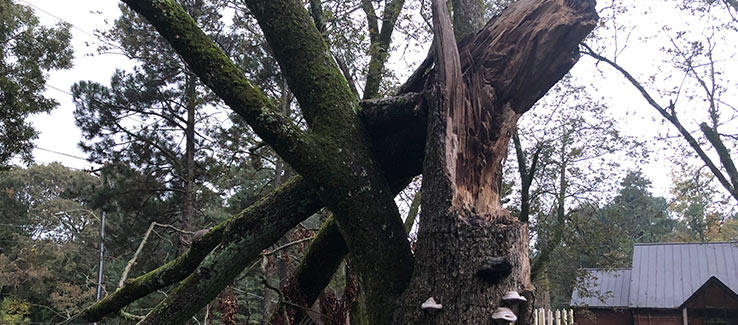
Disease – Branches showing signs of disease like wilting foliage, chlorosis, cankers, dieback, or a combination of symptoms.
Infestation – Branches exhibiting signs of infestation will look similar to those of disease but accompanied by D-shaped or round exit holes (for beetles), carpenter ants entering and exiting holes and/or cavities (this is a sign of significant decay), and visual confirmation of adult boring or detrimental insects.
Depending on the severity of infection or type of insect infestation, you may need to remove your tree as a measure of protection for your other trees and property. Read more about when pruning or removal is necessary at fasttreeremovalatlanta.com/when-tree-pruning-cutting-emergency-removal-atlanta-ga
When to Prune Trees
Most pruning activities should be restricted to the dormant season, being late fall through early spring (before bud break) for most tree species. Everything slows down during a tree’s dormancy, leaving the tree less susceptible to disease and insect infestation. Consider the following:
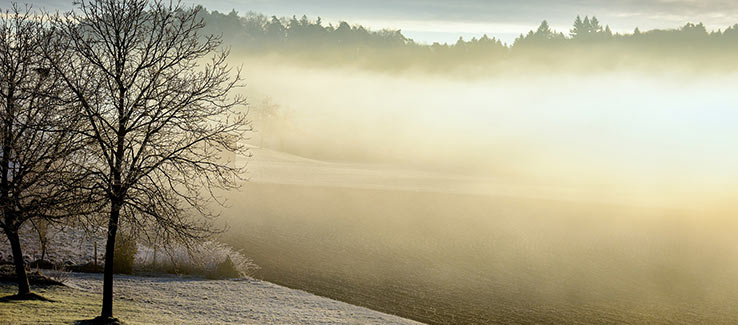
Fruit Trees should be pruned in early spring (before bud break) while the tree is still dormant and leafless.
Evergreens (all of them), except pines, should be pruned before new growth emerges in the spring or during the semi-dormant period in mid-summer. When pruning, it is imperative to follow branching patterns to maintain the tree’s natural shape.
Pines should be pruned in the spring as new growth emerges. To produce a compact, uniform plant or to maintain a shape, cut one-third to one-half of each growth area as it expands in the spring. Avoid pruning back to woody stems; new growth cannot develop from these areas.
When mature pines are overgrown or become a nuisance, the better option is usually to remove entire branches at a time.
Spring Flowering Trees respond best to pruning immediately after blooming.
Later Flowering Trees should be pruned in late winter or early spring.
Note: If you are in doubt of your tree’s species and/or pruning requirements, hire a certified arborist to help you give your tree the proper care.
Tree Pruning Tools
The correct tools will facilitate better pruning results. Keeping these tools well-maintained and sharp improves their performance and lessens your burden. The following tools will likely be adequate for most of your pruning activities:
Pruning Shears – Probably one of the most essential tools to own. They cut up to 3/4 inches in diameter.
Lopping Shears – Similar to pruning shears, but have long handles providing better leverage when cutting branches up to 1 1/2 inches in diameter.
Hand Saws – are essential for cutting branches over 1 1/2 inches in diameter. Most hand-held pruning saws can easily cut through branches 4 to 6 inches in diameter.
Chain Saw – Should be used on larger branches. Never use a chain saw to reach branches above your shoulders or when on a ladder.
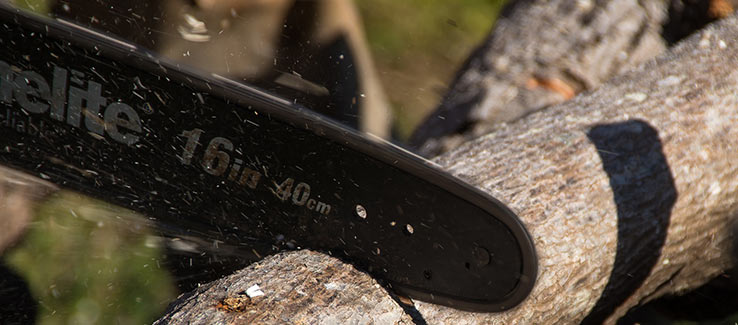
Pruning Tree Branches
In this article, you discovered essential information on how to prune tree branches, why they should be pruned, when to prune, and some of the equipment you may need.
Correct pruning activities can strengthen a tree’s health, encourage vigorous growth, remove diseased or infested branches, and extend its life expectancy by years or decades.
Ignoring the need to prune your trees can result in overgrown, diseased, and dying trees capable of causing catastrophic damages when they fall on your property.
Sources:
extension.umn.edu/planting-and-growing-guides/pruning-trees-and-shrubs
mortonarb.org/trees-plants/tree-and-plant-advice/horticulture-care/pruning-evergreens
arbordayblog.org/diy/diy-spring-flowering-trees-pruned/
cesonoma.ucanr.edu/files/27164.pdf
aces.nmsu.edu/pubs/_h/H156/welcome.html
(404) 220-9965
(404) 220-9963

